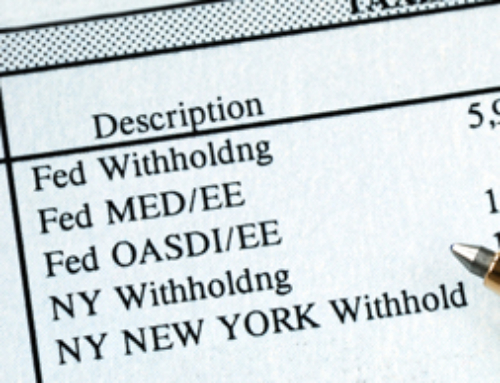 Medical Tax Deductions Are Worth More Than You Think
Medical Tax Deductions Are Worth More Than You Think
By Eva Rosenberg, EA
Starting this article sent me on an extended Google search about a sweet client who died several years ago. Johnny came to me when the IRS audited his medical deductions. Johnny (not his real name) had wasted the tax benefits that his medical costs could have provided. What I learned from his case can help others, too.
Household Employees and Nursing Care
Johnny decided to give up his deduction for the cost of his medical care providers—over $40,000. Why? Although Johnny was paying for round-the-clock care for his mother, and one shift for himself, he didn’t have these individuals on a payroll. He didn’t want to get them into trouble. This is a very common problem.
When paying anyone $1,700 or more per year, you must get familiar with IRS rules for household employees. That means setting up a payroll for them, hiring people through an agency, or leasing employees. Your tax professional can help you. If you don’t have one, contact a nanny service or payroll service to handle your payroll. You will still need to include a Schedule H on your personal IRS tax return.
Most or all of the cost of a nursing home or convalescent facility will also qualify as a medical expense. Note: retirement hotels are not necessarily care facilities. Those expenses might not count as medical costs unless they provide assisted-living services.
While you may not have $40,000 in expenses, if you pay for in-home care or residential care for yourself or a parent, you are quite likely to have deductible medical expenses.
Minimal or No Retirement Distributions
When you’re ill or in pain, you are not paying attention to tax planning. You’re simply trying to survive. Johnny was expending at this level for medical for several years before I met him. He used his own savings to cover the costs—another common behavior.
Had a professional looked at his finances, he or she could have told him to draw the money from his 401(k) account. The medical expenses would have offset most or all of the draws. He could have drawn down over $200,000 of that money tax-free before I met him. Instead, he died with over half a million dollars in his 401(k)—all of it taxable to his heirs.
Remember to look at the balances in all untaxed retirement accounts to see how much of it can be drawn tax-free or in the 10 percent tax bracket.
Health Insurance and Long-Term Care Premiums
Remember to include the Medicare premiums deducted from your Social Security checks. Annual long-term care premiums are deductible on a sliding scale, depending on age. Some places require a lump-sum payment for coverage or care. You cannot deduct that all in one year. The costs can be deducted over the life of the contract, or some other actuarial period of time.
Taking into account co-pays for prescriptions and costs for medical parking and mileage, therapies, hearing aids, vision aids, and lots more, a person who is elderly, infirm, or disabled can cash in on medical deductions—even if he or she is limited to 7.5 percent of adjusted gross income.
Itemized Deduction, AMT, and Other Tax Nightmares
Do I Get a Deduction for My Gifts? Or Do I Get Punished for Being Generous?






